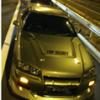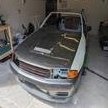Blitz Or Hks Intercoolers
Announcements
-
Similar Content
-
Latest Posts
-
Discovered today that if I select reverse first and take my foot off the brake, then select drive, the drive indicator light works and so does the tiptronic gear indicator.
-
Ok so after much research and talking with knowledgeable people I've got my turbo conversion done and it's all running great other than 1 small issue. Car has remained auto with the na auto and tcm, I've used a stagea ecu with. NIstune board and everything is great other than my gear selection on the dash. It illuminates park, reverse, neutral, 3rd and 2nd. But nothing drive or what gear your in when you pop it into tiptronic. I'm sure there is maybe 1 wire in the ecu plug I need to move to rectify this. Does anyone here have any ideas? Cheers guys
-
Thanks for the heads up, I have now started some watching of it. Duncan, it sounds like its slipping when shifting down the main straight. It flares before grabbing the next gear. Do you notice it when driving? Does it do it in any other gears?
-
Ha, I stopped running Iridiums and fancy spark plugs in RBs as they last just as long as coppers, and coppers are way way cheaper. RBs foul the plugs well before "they expire the plug"
-
Nah mate, currently all spare time is taken up with landscaping, in saying this, I really want to hit Wakefield in the future, but, I've got a few months of work until I'm happy with the yard My comments were about a YouTube video Duncan just dropped
-








Recommended Posts
Create an account or sign in to comment
You need to be a member in order to leave a comment
Create an account
Sign up for a new account in our community. It's easy!
Register a new accountSign in
Already have an account? Sign in here.
Sign In Now